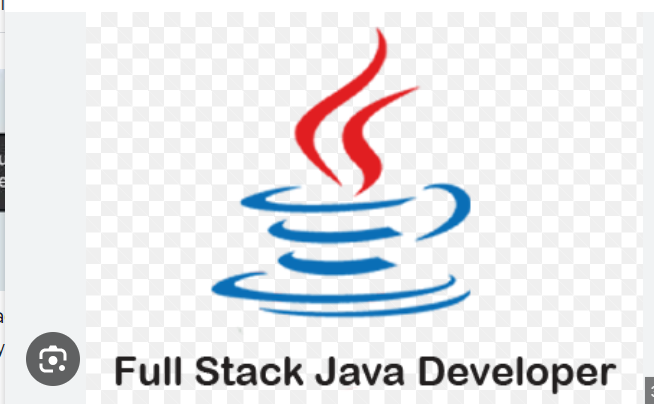
Is full-stack need coding?
Yes, full-stack development requires coding skills. Full-stack developers are responsible for working on both the front-end (client-side) and back-end (server-side) of web applications, and coding is a fundamental aspect of this role. Here's a breakdown of the coding requirements for each aspect of full-stack development: Front-End Development: HTML, CSS, JavaScript: Writing HTML for structuring web content. Creating styles and layouts with CSS. Implementing client-side interactivity and dynamic behavior using JavaScript. Front-End Frameworks: Utilizing frameworks like Angular, React, or Vue.js requires coding in the respective programming languages (TypeScript for Angular, JavaScript for React and Vue.js). Writing code to build and manage user interfaces. Back-End Development: Core Java: Coding in Java to handle server-side logic and application functionality. Spring Framework: Writing Java code using the Spring framework, such as Spring Boot for rapid application development. Implementing web applications with Spring MVC. Coding for data access using Spring Data. Implementing security features with Spring Security. Database Management: Writing SQL queries to interact with relational databases. Coding database interactions using Object-Relational Mapping (ORM) tools like Hibernate. RESTful Web Services: Designing and coding RESTful APIs for communication between the front-end and back-end. Version Control and Collaboration: Version Control: Writing commands and scripts for version control systems like Git. Build Tools and Automation: Build Tools: Configuring and using build tools like Maven or Gradle involves writing configuration files. Testing: Unit Testing: Writing unit tests using frameworks like JUnit. Integration Testing: Coding integration tests to ensure different components work together seamlessly. Deployment and CI/CD: Deployment Strategies: Implementing deployment strategies may involve scripting. Continuous Integration/Continuous Deployment (CI/CD): Writing scripts for setting up and maintaining CI/CD pipelines. Security: Web Security: Implementing security features involves writing secure code. Writing code for secure authentication and authorization. Advanced Topics: Microservices Architecture: Coding microservices in a distributed architecture. Cloud Computing Platforms: Writing code for deploying and managing applications on cloud platforms. Containerization: Using Docker involves writing Dockerfiles and managing container configurations. In summary, full-stack development is a coding-intensive role that requires proficiency in multiple programming languages and frameworks. Whether it's creating user interfaces, implementing business logic, handling databases, or configuring deployment pipelines, coding is an integral part of the full-stack developer's responsibilities. Yes, full-stack development requires coding skills. Full-stack developers are responsible for working on both the front-end (client-side) and back-end (server-side) of web applications, and coding is a fundamental aspect of this role. Here's a breakdown of the coding requirements for each aspect of full-stack development: Front-End Development: HTML, CSS, JavaScript: Writing HTML for structuring web content. Creating styles and layouts with CSS. Implementing client-side interactivity and dynamic behavior using JavaScript. Front-End Frameworks: Utilizing frameworks like Angular, React, or Vue.js requires coding in the respective programming languages (TypeScript for Angular, JavaScript for React and Vue.js). Writing code to build and manage user interfaces. Back-End Development: Core Java: Coding in Java to handle server-side logic and application functionality. Spring Framework: Writing Java code using the Spring framework, such as Spring Boot for rapid application development. Implementing web applications with Spring MVC. Coding for data access using Spring Data. Implementing security features with Spring Security. Database Management: Writing SQL queries to interact with relational databases. Coding database interactions using Object-Relational Mapping (ORM) tools like Hibernate. RESTful Web Services: Designing and coding RESTful APIs for communication between the front-end and back-end. Version Control and Collaboration: Version Control: Writing commands and scripts for version control systems like Git. Build Tools and Automation: Build Tools: Configuring and using build tools like Maven or Gradle involves writing configuration files. Testing: Unit Testing: Writing unit tests using frameworks like JUnit. Integration Testing: Coding integration tests to ensure different components work together seamlessly. Deployment and CI/CD: Deployment Strategies: Implementing deployment strategies may involve scripting. Continuous Integration/Continuous Deployment (CI/CD): Writing scripts for setting up and maintaining CI/CD pipelines. Security: Web Security: Implementing security features involves writing secure code. Writing code for secure authentication and authorization. Advanced Topics: Microservices Architecture: Coding microservices in a distributed architecture. Cloud Computing Platforms: Writing code for deploying and managing applications on cloud platforms. Containerization: Using Docker involves writing Dockerfiles and managing container configurations. In summary, full-stack development is a coding-intensive role that requires proficiency in multiple programming languages and frameworks. Whether it's creating user interfaces, implementing business logic, handling databases, or configuring deployment pipelines, coding is an integral part of the full-stack developer's responsibilities. https://www.sevenmentor.com/full-stack-java-course-in-pune.php
-
fullstack
java
-



